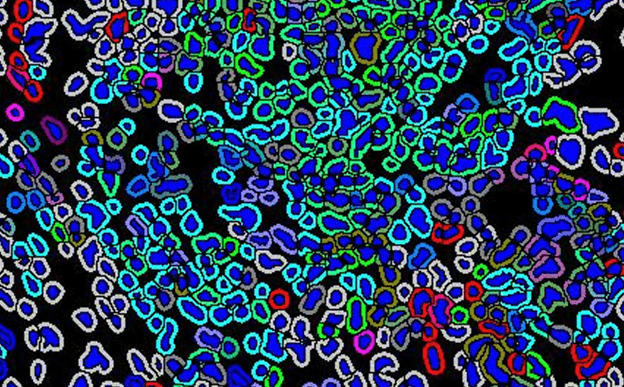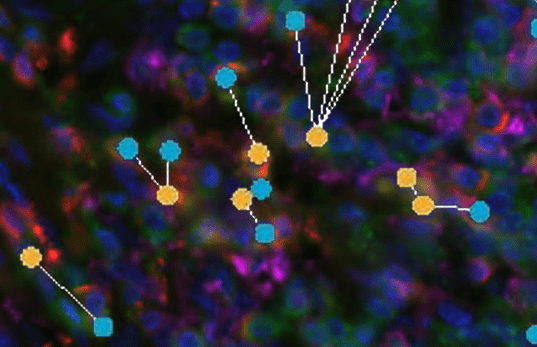When it comes to biomedical research, quantitative data is always preferred to qualitative data since it is measurable and not left up to interpretation. When it comes to drug discovery, gathering quantitative data is needed to objectively say whether a drug works or not, and this data can be gathered through image analysis. Image analysis is the extraction of data from images and is accomplished through a multitude of image analysis techniques. At Visikol, image analysis is a routine service offered to clients to analyze a variety of aspects about an image to answer the research question at hand. Some common biomedical image analysis techniques include cell counting, spatial analysis, and morphological analysis.
The most common type of image analysis is cell counting, which involves segmentation of cells through a nuclear stain and quantifying positivity of specific labels within the segmented cells to obtain a cell count of specific cell subtypes, or cells with the specific target of interest as seen in Figure 1. This works through the selection of positivity criteria for each label within a cell, such as a certain level of intensity or amount of label within the cell. Additionally, cell subtypes can be outlined using colocalization, which is the spatial overlap between labels. For example, segmented cells positive for CD68 and MHCII label could outline M1 Macrophages. This type of quantification is useful when comparing different treatment groups because it helps to quantify how a drug affects specific targets or cell types of interest and allows for statistical comparisons between the groups.

Figure 1. Cell counting overlay of the segmentation of different cell types within a tissue sample.
An expansion upon cell counting is spatial analysis, which can utilize the cell counting data to determine the spatial relationship between different cell subtypes or between a specific cell type and a region of interest as seen in Figure 2. One use case for this type of analysis is in immuno-oncology, where spatial analysis can help by determining the average distances between cancer cells and immune cells within an image or help determine the average distance of immune cell infiltration into a tumor region.

Figure 2. Spatial analysis overlay of the distance between two cell subtypes within a tissue.
Another image analysis technique is morphological analysis, which analyses the structure of segmented objects within an image. This type of analysis will measure aspects like circularity, eccentricity, area, texture, and many other types of features. An application of this is in drug discovery, where one can analyze the toxicity and safety of a drug by seeing how it changes the structure of cells when comparing a control versus a treated group.
Additionally, the above-mentioned analyses can be done in 3D as well, which offers an extra dimension both literally and figuratively to the data generated. Not only that, but the data generated from analyzed images can be used to train machine learning or deep learning algorithms to create a more robust tool for areas like drug discovery or clinical diagnostics. Being able to generate quantitative data is critical for the future of biomedical research, and image analysis is a critical tool in helping to accomplish this goal. At Visikol, we are experts in traditional 2D and 3D image analysis techniques as well as more advanced techniques involving machine learning and deep learning algorithms. Please feel free to contact us for your image analysis needs to add an extra level to your research.
